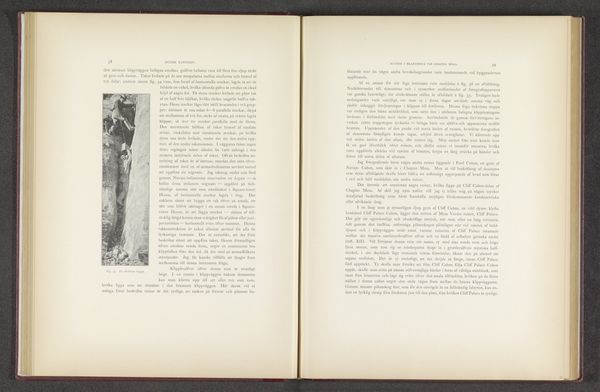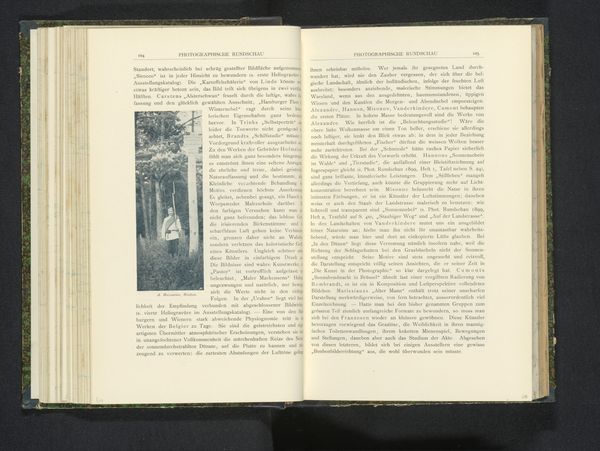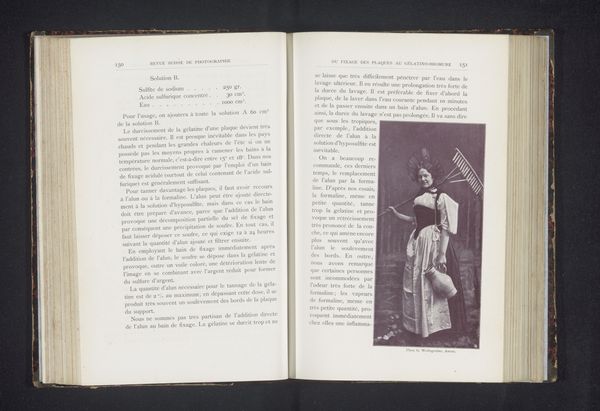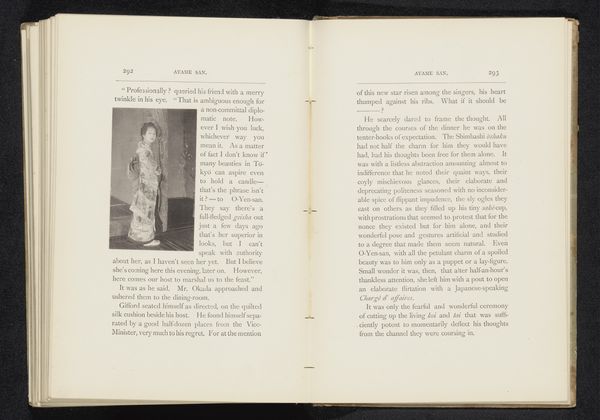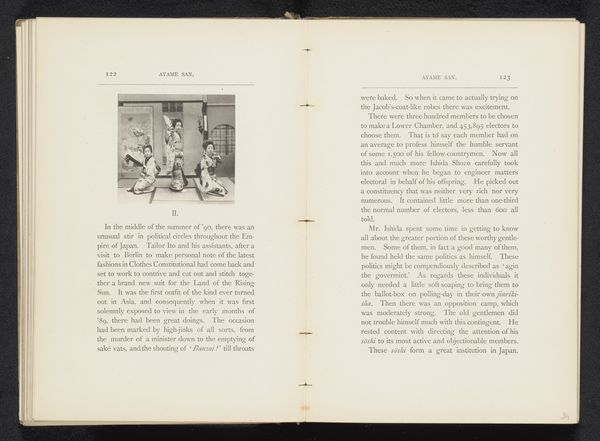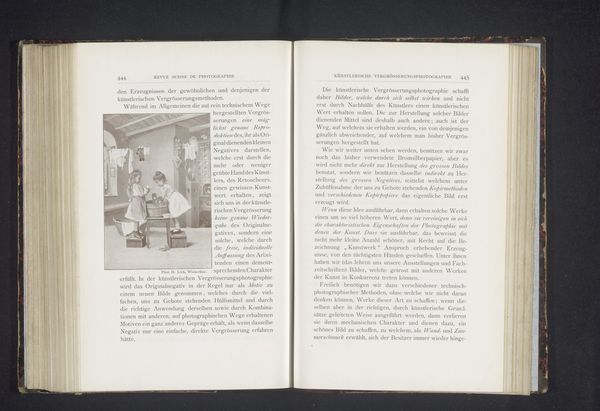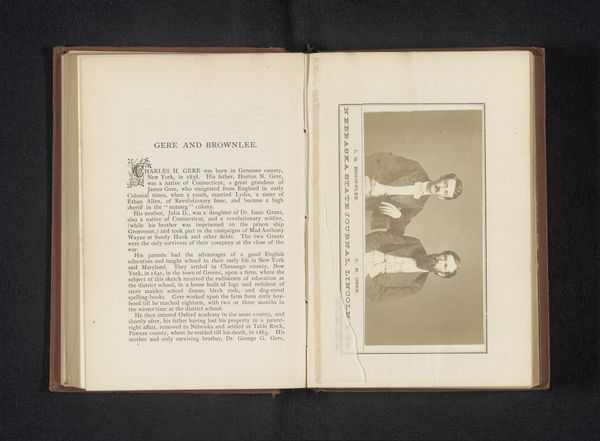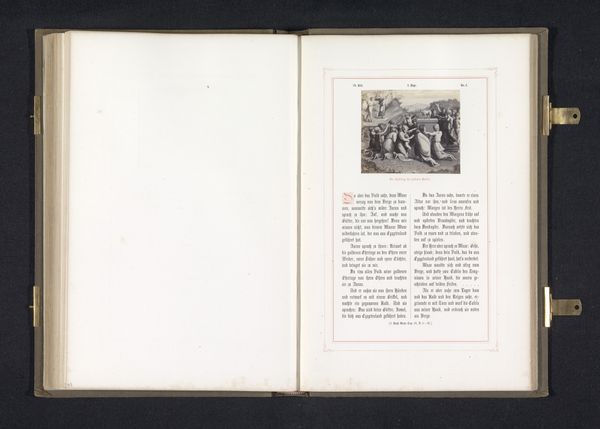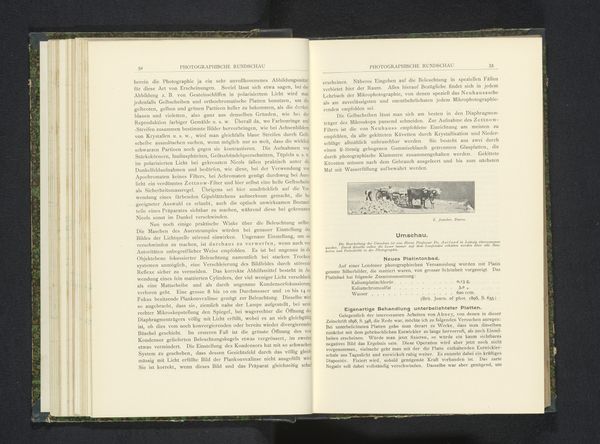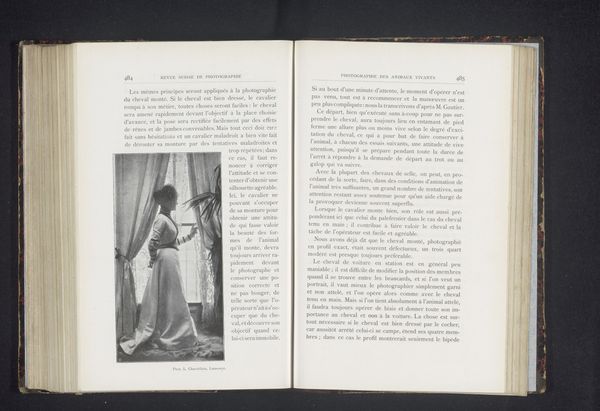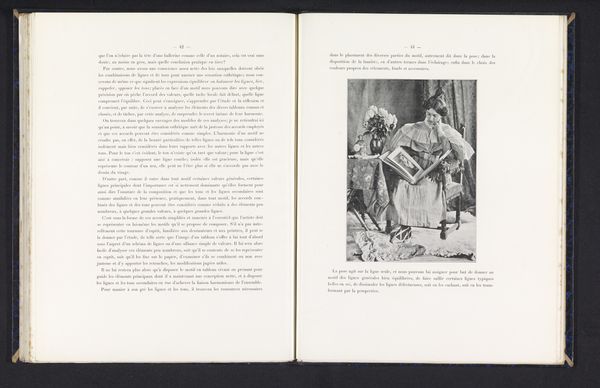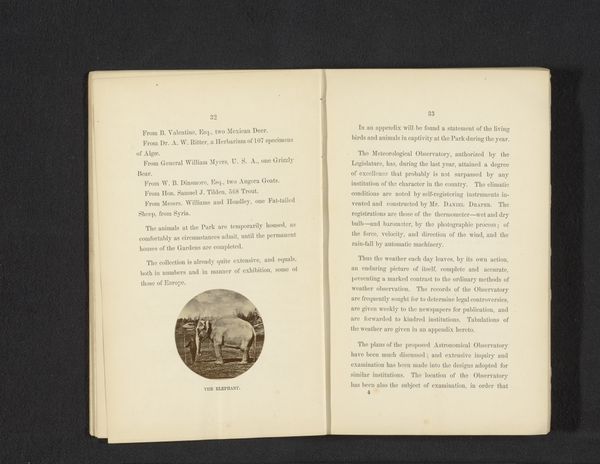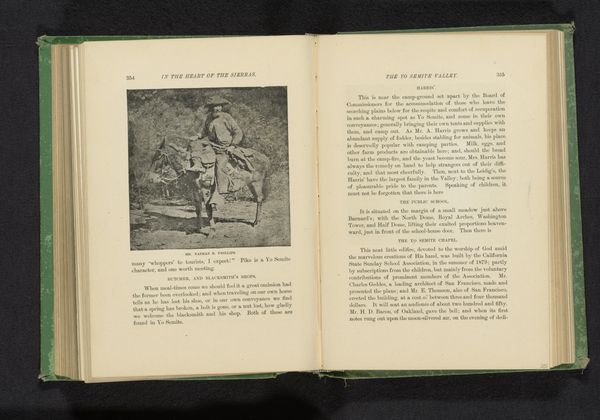
print, photography
#
portrait
#
still-life-photography
# print
#
photography
#
journal
#
folded paper
#
historical font
Dimensions: height 81 mm, width 46 mm
Copyright: Rijks Museum: Open Domain
Curator: Our point of focus: *Meisje met bloemen*, or Girl with Flowers, a photographic print by Frédéric Boissonnas, sometime before 1902. Its charm immediately strikes, yet the composition feels unusually placed within this bound book, doesn’t it? What are your initial observations? Editor: Well, I’m drawn to the textural contrast. You have this aged paper, full of text, then this small, soft portrait nestled within. It’s almost like a secret hidden within the academic text. What formal qualities stand out to you, framing your experience with the piece? Curator: The stark juxtaposition undeniably captures attention. Consider the deliberate staging of the image. Boissonnas carefully chose to represent his subject alongside what appears to be still-life, but the technical skill is in subtly manipulating light to define planes. How does the monochrome palette impact the interplay of form and shadow? Editor: I see what you mean. The grayscale definitely emphasizes shape, especially in the folds of her dress and the arrangement of flowers. It’s interesting how that limits our access too: it gives us form, but it does so while omitting any chance to see color. Does this relate at all to historical photographic practices or any specific formal choices by Boissonnas? Curator: Certainly. Early photographic processes, frequently rendered the world in monochrome or sepia tones. That being said, the deliberate emphasis on tonal gradations allows Boissonnas to focus on the subject. What’s your interpretation of the negative space around the subject? Editor: I see, well that limited tonal range directs my gaze entirely onto the girl and flowers. It keeps the image minimal, contained even. That makes sense, since she occupies only a fraction of the open book, further contributing to the feeling of peering in at an almost private, contemplative moment. Thank you, that clarifies my understanding! Curator: Precisely! It seems, looking at it now, to show an intentional disruption of scholarly rigidity by introducing soft lines that evoke intimate reflection. Something to sit with, I'd suggest.
Comments
No comments
Be the first to comment and join the conversation on the ultimate creative platform.
